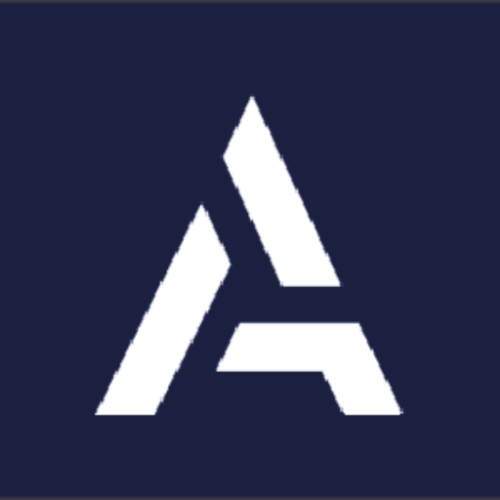For many refugees, moving to their own apartment is the start of a self-determined and future-oriented life. As the article “How refugees (have to) live – the way from the initial reception center to their own apartment” explains, this form of accommodation, in addition to maintaining privacy and the opportunity for social participation, enables the local authorities to save some considerable costs. However, if it is not (yet) possible for asylum seekers to move into a private apartment, many have to accept the alternative: accommodation in communal or collective accommodation. In this regard, § 3 para. 1 of the Hessian Admissions Act: “The districts and municipalities are obliged to accommodate the persons to be admitted according to § 1 in accommodations that guarantee a decent stay without health impairments.” But what does “decent accommodation” mean in concrete terms, which minimum standards must be observed and on the basis of which criteria can this be ensured?
the essentials in brief
- About half of the German federal states have defined minimum standards for communal accommodation for refugees, but these are only binding in about a quarter of the states.
- The overriding principle is to ensure a manageable, scaled integration of the refugees into existing urban, spatial and social structures.
- Regular checks on compliance with the minimum standards and independent complaints bodies are necessary to make grievances visible and to improve the accommodation conditions.
Minimum standards: obligation, recommendation or omission?
Binding minimum standards
There are minimum standards with a binding character in the federal states of Baden-Württemberg, Berlin, Brandenburg, Mecklenburg-Western Pomerania and Thuringia. The federal states of Bavaria, Saxony, Saxony-Anhalt and Schleswig-Holstein have issued recommendations on minimum standards.
Minimum standards for the provision of housing determine what decent housing means or at least define the minimum requirements for it. However, only nine out of 16 German federal states have issued such minimum standards for the accommodation of refugees. However, the minimum standards are actually binding in only five federal states, while four federal states only see them as recommendations. The defined minimum standards relate primarily to structural and spatial conditions and the furnishings of the accommodation. On the other hand, other aspects that are also highly relevant to the quality of housing, such as support from social workers or the relationship with the property manager, are defined only indirectly via the support key or the qualification requirements for the staff. Of course, valid building, health, fire and accident prevention regulations are not listed separately in the minimum standards.
What is worrying, however, is that none of the states that have defined minimum standards list a ban on mobile homes. Only the Ministry of the Interior of Schleswig-Holstein makes a recommendation against decentralized accommodation in residential containers.
Central demands for humane accommodation
Required living space per person
In comparison, the Federal Statistical Office recorded an average living space of 42.7 m2 per person in Germany as of May 9, 2011. Although this information also includes areas for kitchen and sanitary facilities, this comparison makes it clear how drastically the living conditions in refugee accommodation differ from the conventional standard of living.
Although it should actually be a matter of course, it cannot be stressed enough that the accommodation of refugees is not just about creating the largest possible capacities. Rather, social and humane guidelines for a needs-based supply of housing must move into the focus of the discussion. This is all the more important for accommodation for asylum seekers, since they usually do not (are not allowed to) work regularly and therefore spend a lot of time in the accommodation. The overriding principle is to ensure the integration of refugees into existing urban, spatial and social structures. This should be in the form of manageable units that are in scale with the surrounding structures.
Structural structures: None of us likes to live in settlements made up of tents and containers or in collective accommodation such as gymnasiums or barracks. A basic prerequisite for decent accommodation is therefore suitable buildings in permanent construction.
Locations with access to social infrastructure: The location and accessibility of the accommodation are considered to be decisive factors that determine the opportunity to participate in social life, access to advice centers, authorities, educational institutions and health care as well as the accessibility of public transport connections and shopping facilities. We wouldn’t apply for an apartment in a forest, industrial or commercial area either.
Urban integration: Since refugees should only be housed in collective accommodation for as short a time as necessary, possible subsequent uses must be considered when they are being built. Therefore, the facilities for refugees should be connected to the existing housing development so that they can be integrated into the general social housing market when they are no longer needed.
Size of accommodation: Experts recommend accommodating a maximum of 50 people in one accommodation and avoiding mass accommodation with a camp character. These not only hold considerable potential for conflict within the facility, but also lead to stigmatization of the residents and stir up fears among the local population.
Self-contained residential units and minimum space requirement: privacy and quiet are essential prerequisites for successful integration. In order to ensure privacy protection, separate and lockable residential units are therefore necessary. These should have their own, functional and clean sanitary facilities and kitchens as well as basic furniture. They are to be occupied by a maximum of four people, whereby attention must be paid to social relationships and in particular to family structures. At least 7 m2 of living and sleeping space should be available per person.
Common rooms: In order for collective accommodation to actually deserve the designation “communal accommodation”, it must have rooms for encounters and exchange, for leisure, education (e.g. language courses) and creativity as well as for cultural and religious purposes. In addition, separate children’s playrooms with appropriate equipment and learning opportunities are necessary.
Open spaces and outdoor facilities: We all feel the urge to go outside at least once a day and feel the sun on our skin. That is why refugee accommodation should also have open and green spaces for sports, games and exercise.
Social advice and support: It is not only structural and spatial requirements that are decisive, qualified support from appropriately trained staff is also essential. No more than 80 people should be cared for per full-time social worker.
Special rooms and a specific care program should be available for people with special needs (eg traumatized people, people with chronic illnesses or physical impairments as well as single parents).
Monitoring and complaint management to uncover abuses
If standards are defined, they must also be observed. However, since this is not always a matter of course – especially in construction projects where there is such enormous time and cost pressure – regular checks by the health authorities, building law checks and fire protection checks are necessary. Non-compliance with the standards can be sanctioned with instruments such as contractual penalties or reimbursement reductions. In the case of dangerous structural defects, significant mold growth or similarly serious damage, the immediate closure of accommodation is often the only reasonable consequence. The establishment of an independent complaints office and the establishment of a regulated procedure for dealing with complaints from residents are also recommended. This would turn the administrative regulations into transparent principles that can be enforced by all those affected.
However, since many refugees are often unaware of their basic rights on the one hand and are at the same time structurally dependent on the management of the home and the staff on the other, such complaint management systems are particularly delicate. The prerequisite for this is therefore that the residents of the home are informed about their basic and civil rights and what behavior they can expect from the home management and the staff. The complainants must also be given a credible message that they will not face any adverse consequences.
Other parts of this series
- Part II – Minimum standards of refugee accommodation – criteria for decent accommodation




